Palm jaggery, also known as palm sugar or gur (in some regions), is a traditional sweetener made from the sap of various palm trees. It is a popular natural sweetener in many parts of Asia, Africa, and South America. Palm jaggery is known for its unique flavor and natural sweetness, making it a popular choice for those looking for an alternative to refined sugar or other sweeteners. Its use can vary from one culture to another, and it plays a significant role in the culinary traditions of many communities worldwide.
Cultural Significance: Palm jaggery has cultural and culinary significance in many regions where it is produced. It is often used in traditional rituals, festivals, and celebrations, and its production is a part of local heritage.
Palm jaggery names in different regions in india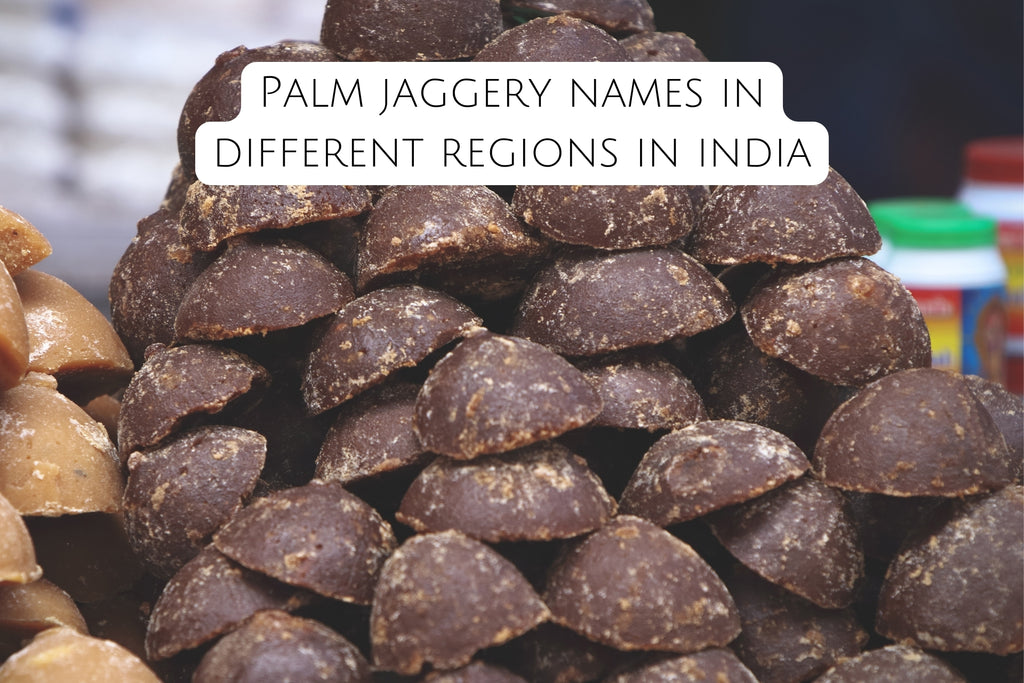
Palm jaggery is known by different names in various regions of India, reflecting the linguistic and cultural diversity of the country. Here are some of the regional names for palm jaggery in different parts of India:
Gur or Jaggery: "Gur" or "jaggery" are common names for palm jaggery used in many parts of North India, including states like Punjab, Haryana, Uttar Pradesh, and Rajasthan.
Nolen Gur: In West Bengal and parts of the eastern region, palm jaggery is referred to as "nolen gur." It is particularly popular in Bengali cuisine and is used in sweets like "sandesh" and "rosogolla."
Karupatti: In Tamil Nadu and some parts of South India, palm jaggery is known as "karupatti." It is used in various traditional South Indian dishes and sweets.
Panai Vellam: In Tamil Nadu and Kerala, another name for palm jaggery is "panai vellam." It is widely used in both states in various culinary preparations.
Tal Mishri: In some parts of Gujarat and Maharashtra, palm jaggery is known as "tal mishri" or simply "tal." It is used in local sweets and snacks.
Thaati Bellam: In Telangana and Andhra Pradesh, palm jaggery is called "thaati bellam" or "thadi bellam." It is used in traditional Telugu cuisine.
Taad ka Gur or Taad ka Chashni: In the northern state of Himachal Pradesh, palm jaggery is sometimes referred to as "taad ka gur" or "taad ka chashni." The "taad" tree is a type of palm tree.
Chakka Varatti: In the state of Kerala, palm jaggery is used in the preparation of "chakka varatti," a sweet jam made from jackfruit.
Kharik: In parts of Gujarat and Rajasthan, the term "kharik" is used to refer to palm jaggery, especially when it is made from the sap of date palms.
Palm jaggery production: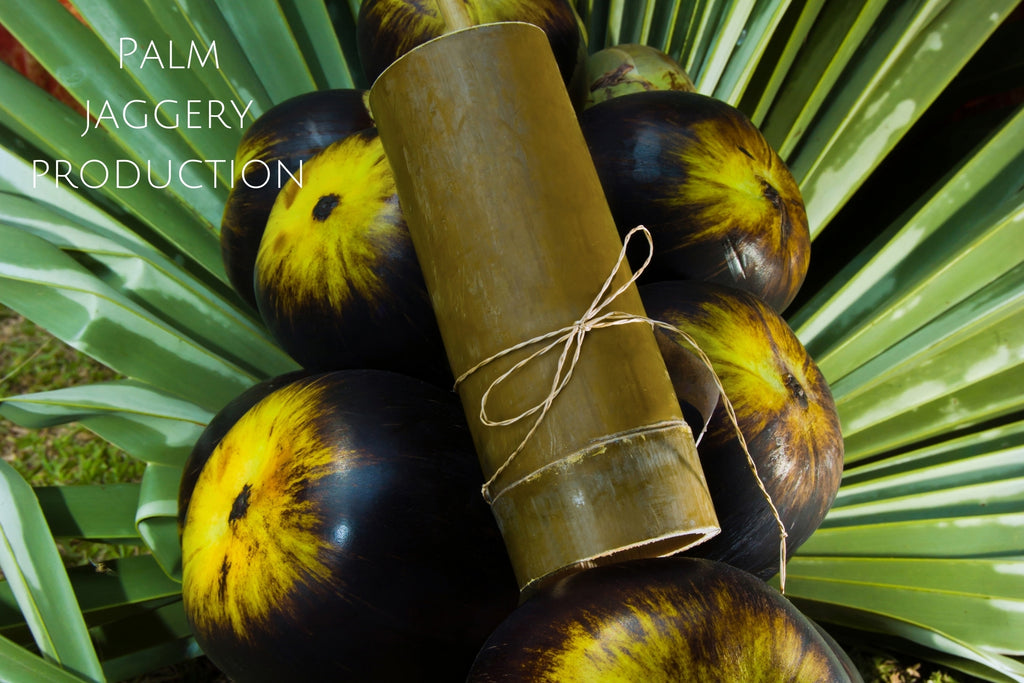
production of palm jaggery involves a series of steps to extract, process, and solidify the sap of palm trees into the final product. Here's an overview of the typical production process for palm jaggery:
Sap Collection: The first step in palm jaggery production is the collection of sap from palm trees. Various palm tree species can be used, including date palms, coconut palms, and Palmyra palms. The sap is usually collected from the flowering buds of the palm trees.
Tapping the Trees: A tapper, often a skilled worker familiar with the process, climbs the palm tree and makes a small incision or cut in the flowering bud. This cut allows the sap to flow out and be collected in containers, such as clay pots or plastic receptacles, which are typically hung from the tree.
Sap Collection Containers: The sap containers are usually left attached to the tree for a few hours or overnight to allow the sap to drip into them. The sap is collected early in the morning for the best quality.
Sap Processing: The collected sap is then transported to a processing area. Traditionally, the sap is transferred to large, shallow pans or containers for processing. In some modern facilities, stainless steel or other food-grade equipment may be used.
Heating and Evaporation: The sap is heated over a flame or using other heat sources. This process involves continuous stirring to prevent burning and to promote even evaporation. As the sap heats up, the water content begins to evaporate, leaving behind a concentrated syrup.
Formation of Jaggery Blocks: As the sap thickens and caramelizes, it is poured into molds to shape it into blocks or other desired forms. Some manufacturers may also allow the jaggery to cool and solidify naturally without using molds, resulting in irregularly shaped pieces.
Cooling and Drying: The jaggery blocks are allowed to cool and harden, a process that may take a few hours to a day. Once cooled and solidified, they are removed from the molds or cut into smaller pieces.
Packaging: The finished palm jaggery is typically wrapped in leaves or packed into containers for distribution and sale. It may be sold in various forms, including blocks, granules, or pressed into cakes.
Nutritional value of palm jaggery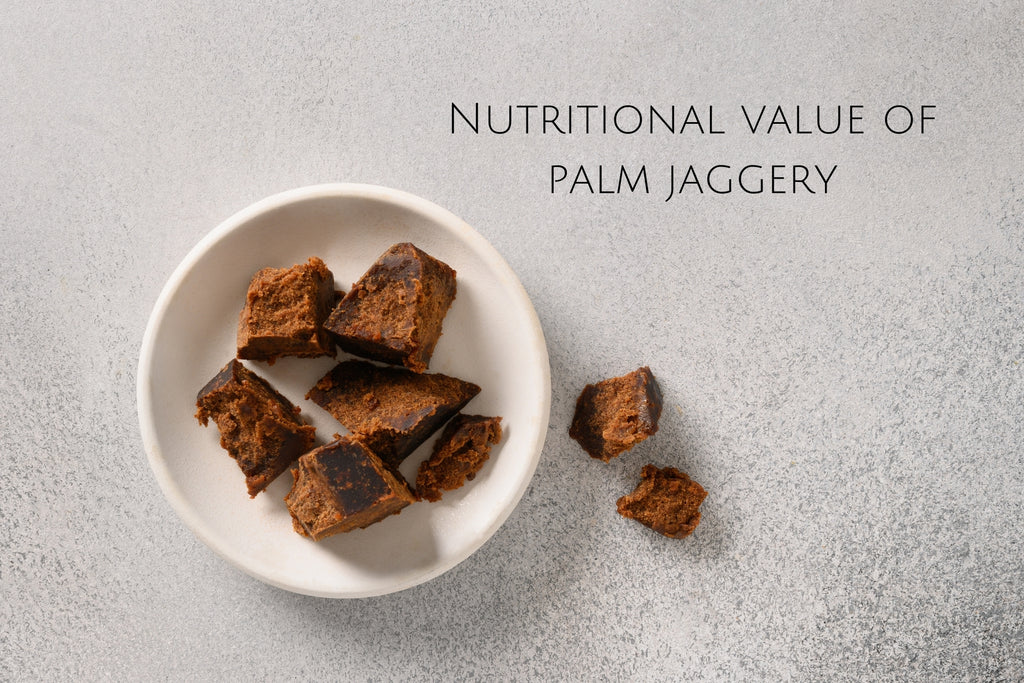
- Energy: Approximately 383-400 calories
- Carbohydrates: Around 97-98 grams, predominantly in the form of sucrose, glucose, and fructose.
- Protein: Minimal, typically less than 1 gram.
- Fat: Negligible amounts, usually less than 0.5 grams.
- Dietary Fiber: Minimal, generally less than 1 gram.
- Vitamins: Palm jaggery contains small amounts of vitamins, primarily from the palm sap. It may include traces of vitamin C and various B-complex vitamins, such as B1 (thiamine), B2 (riboflavin), B3 (niacin), B5 (pantothenic acid), and B6 (pyridoxine).
- Minerals: It is a good source of several minerals, including.
- Calcium: Approximately 40-70 mg per 100 grams.
- Phosphorus: Around 20-30 mg per 100 grams.
- Iron: Approximately 5-10 mg per 100 grams.
- Potassium: Varies but can be around 120-180 mg per 100 grams.
- Magnesium: Minimal but present, generally less than 10 mg per 100 grams.
- Antioxidants: Palm jaggery contains antioxidants, such as polyphenols and flavonoids, which can help protect cells from oxidative damage.
Health benefits of palm jaggery:
Boosts immunity: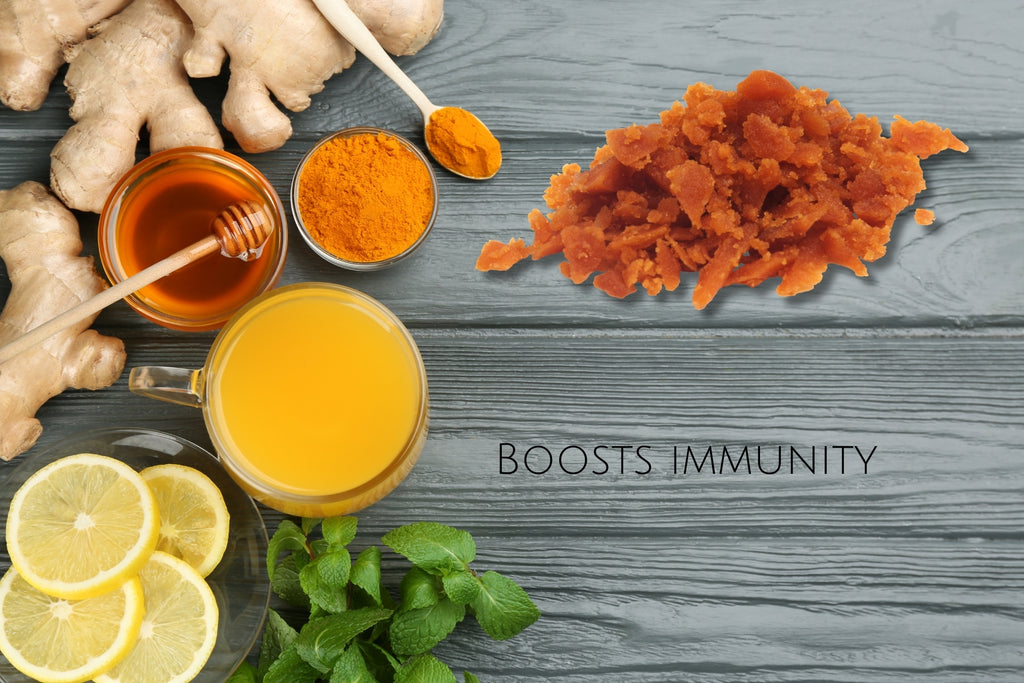
Palm jaggery is a good source of antioxidants, which can help to boost the immune system and protect the body from disease.
Improves digestion:
Palm jaggery is a good source of dietary fiber, which can help to improve digestion and prevent constipation.
Promotes healthy bones and teeth:
Palm jaggery is a good source of calcium, which is essential for healthy bones and teeth.
Regulates blood pressure:
Palm jaggery is a good source of potassium, which can help to regulate blood pressure.
Reduces anemia:
Palm jaggery is a good source of iron, which can help to prevent and treat anemia.
Relieves pain and inflammation:
Palm jaggery has anti-inflammatory properties, which can help to relieve pain and inflammation.
Improves skin health:
Palm jaggery contains glycolic acid, which can help to exfoliate the skin and remove dead skin cells. It also contains antioxidants, which can help to protect the skin from damage.
Uses:
Palm jaggery can be used in a variety of ways, including:
As a sweetener in food and drinks. Palm jaggery can be used to sweeten coffee, tea, smoothies, and other beverages. It can also be used to sweeten baked goods, desserts, and savory dishes.
As a digestive aid. Palm jaggery is known to aid in digestion and relieve constipation. It can be eaten after meals or used to make a digestive tea.
As a folk remedy. Palm jaggery is used in traditional medicine to treat a variety of ailments, including anemia, coughs, and colds. It is also believed to boost immunity and improve skin health.
In conclusion, palm jaggery is a delicious and nutritious sweetener that can be enjoyed in a variety of ways. It is a good choice for people looking for a healthier alternative to refined sugar.

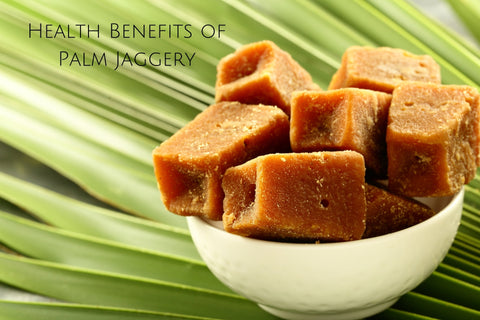
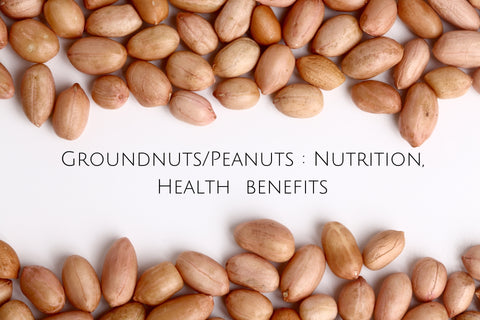

Comments (0)
There are no comments for this article. Be the first one to leave a message!